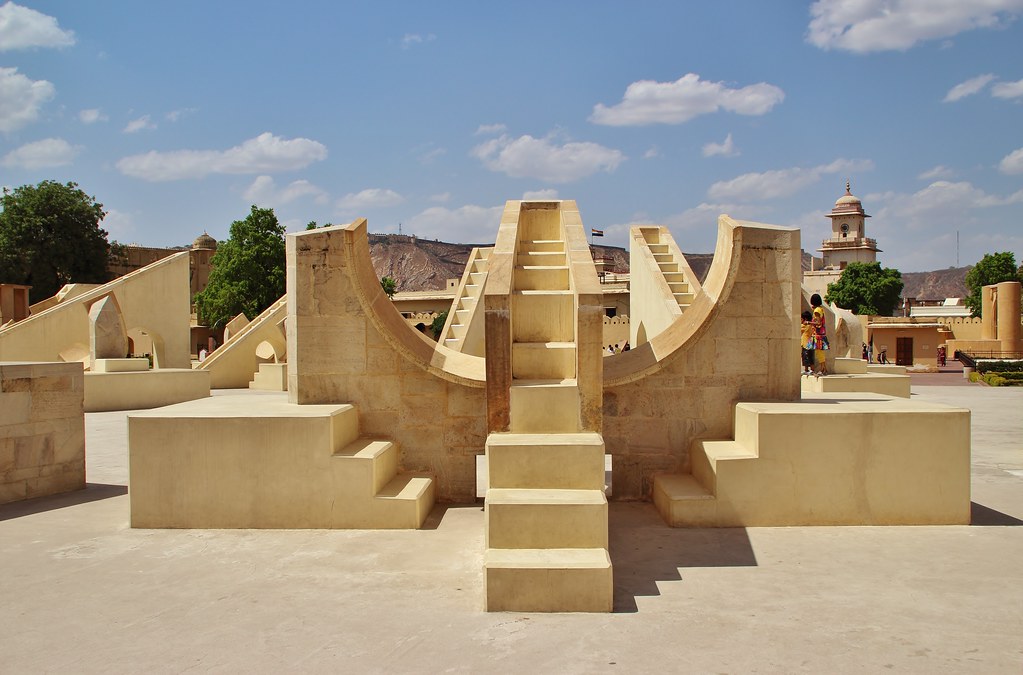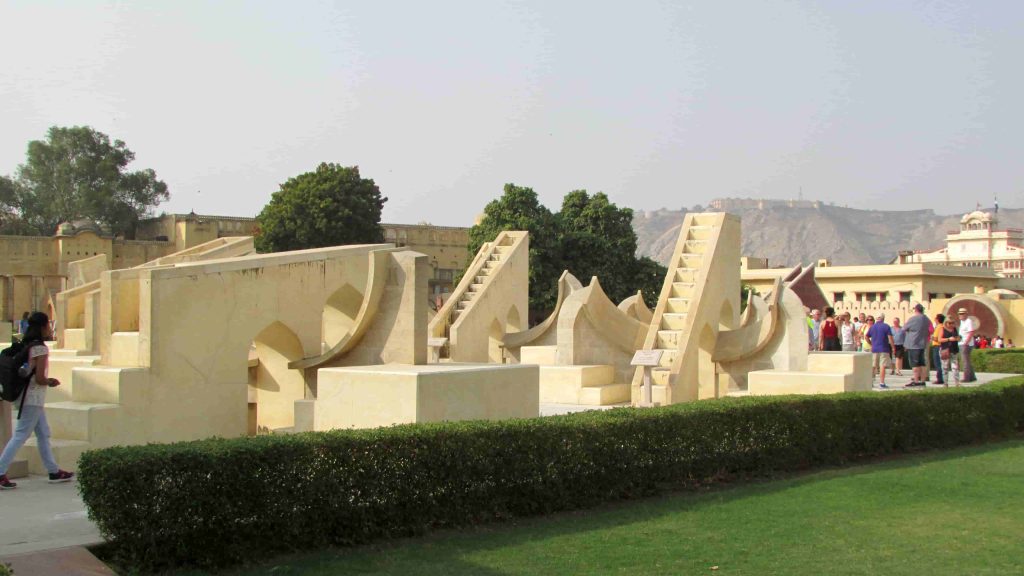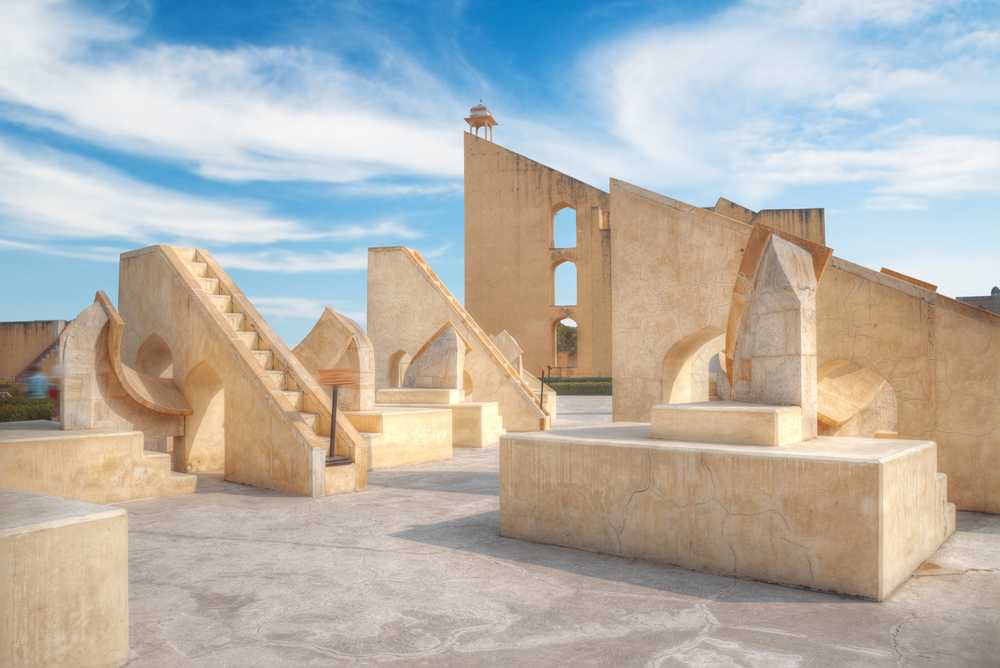Have you heard about Jantar Mantar of Jaipur? Oh, do not confuse it with “mantra” which is one of the few Indian words that has made its way to the Merriam Webster dictionary. Here, the term Jantar Mantar stands for “instruments for measuring the harmony of the heavens”.
Technically, Jantar Mantar Jaipur is an astronomical observation site belonging to the early 18th century. It has the world’s largest stone sundial and is currently one of the UNESCO World Heritage Sites in Jaipur.
This is just the tip of the iceberg there are many more fascinating things to unravel about this beautiful place. Therefore, scroll down to take a closer look at Jantar Mantar of the Pink City. This way you won’t be blank when you will visit it with Alluring Pink Jaipur Package available here at PinkPedia.
Jantar Mantar Jaipur and its history
In the early 18th century, Emperor Muhammad Shah commissioned Maharaja Sawai Jai Singh II, the ruler of Amer and Jaipur to make corrections in the astronomical tables on the planetary positions and to confirm the data.
Being a genius in astronomy, Maharaja Sawai Jai Singh II thought of doing more than the allocated task. Now, those were the days when no astronomical observatories were found in India. So, he planned to construct five Jantar Mantar. Keeping his reign and ties in mind he initiated the construction work in five cities – New Delhi, Ujjain, Mathura, Varanasi, and Jaipur. Unfortunately, Jantar Mantar Mathura got lost in the tide of time. However, the other ones still stand relevant in this 21st century.
Jantar Mantar Jaipur and its concept

If you look at the construction of Jantar Mantar it is quite evident that it is based on the Hindu tradition of astronomical data apart from the Europeans, Islamic and Persian civilization and other important astronomical data available in those days. La Hire’s tables also play a crucial role in the construction of Jantar Mantar Jaipur.
Unlike its inspiration Ulugh Beg Observatory, which was built in 1339-1449 at Uzbekistan by King Ulugh Beg ruler of Samarkand, Jantar Mantar is “not a mistake of its time” due to the accuracy.
Built-in the Ptolemaic tradition, this tourist spot in Jaipur reflects the scientific and technical conceptions in the medieval world.
Jantar Mantar and its Yantra
Jantar Mantar Jaipur is a collection of 19 geometric devices that can measure both time and space for astronomy. You can also observe here the orbits around the Sun.
Built with stone and marble this observatory hasn’t worn or torn down and you can observe the astronomical positions with your naked eye.
Vrihat Samrat Yantra
Could you believe that the Vrihat Samrat yantra sundial can provide you the local time to an accuracy of 2 seconds? If you don’t, then visit it and check yourself. Jotshi Gokul Chand Bhawan restored this sundial in A.D. 1901 for finding time and declination and hour angle of different heavenly bodies and today this world’s largest sundial stands tall. Its gnomon arm is 22.6-meter high and its largest quadrants are of the 15.5-meter radius.

Small Samrat Yantra
It is not just the Vrihat Samrat Yantra which is accurate but also small Samrat Yantra sundial can offer you the time to an accuracy of 20 seconds. Isn’t it amazing? Indeed it is as this shows that rulers in Medieval India were not only interested in building magnificent palaces and forts but also observatories.
Unnatamsa
You can also find at Jantar Mantar Jaipur an instrument that can measure the angular height of an object in the sky and is known as Unnatamsa.
Rasivalaya (zodiacal circle)
You can measure the celestial latitude and longitude of the celestial bodies with the help of Rasivalaya at Jantar Mantar that comprises twelve instruments representing the twelve zodiac signs.
Jaya Prakash Yantra
This yantra or instrument was repaired in A.D. 1901 and even today represents half-celestial sphere rim and helps in finding the positions of all heavenly bodies.
Nadivalaya (equatorial instrument / circular dial)
When you visit Jantar Mantar in Jaipur then you will find two circular plates – one facing north and the other south. Each of these works as the dials and have the wall of the plates inclined towards the south. This inclination is at such an angle that keeps the yantra parallel to the plane of the Earth’s equator.
Chakra yantra
Competent to measure the global coordinates of declination apart from the hour angle of a celestial object, the chakra yantra looks so beautiful and is known as a ring instrument.
Digamsa (Azimuth)
You can measure the relative angular position of the object east words by starting from the north with the help of diagrams which is a cylindrical instrument.
Ram Yantra

To measure the local coordinates of altitude as well as the azimuth of a celestial object, you can use The Ram Yantra at Jantar Mantar Jaipur.
Rama yantra A
Jotshi Gokul Chand Bhawan not only repaired but tested Rama yantra A in A.D. 1891 to measure the altitude and azimuth of the sun.
Kranti writta
You can use Kranti writta to find the declination apart from the distance from the ecliptic and equinox of both the sun and the stars.
Krantivrtta
You can measure the celestial latitude and celestial longitude of an object in the sky with the help of krantivrtta in addition to measuring the solar sign of the sun in the daytime.
Yantra Raj
An adaptation of an astrolabe, which was a medieval instrument used for measuring time, yantra raj can still be used.
When to visit Jantar Mantar?
You must visit Jantar Mantar Jaipur at noon when the Sun is vertically above you and then you can interpret the readings of each instrument.
- Address: Gangori Bazaar, J.D.A. Market, Pink City, Jaipur, Rajasthan
- Visiting Hours: 9:00 am to 4: 30 pm daily
- Entry fees: For Indian tourists – INR 50 per person
- For foreign tourists – INR 200 per person
- For Indian students – INR 15 per person
- For International students – INR 25 per person
- Students need to show their valid ID proof for the discount.
- Light and sound show timings:
- From Oct – Feb: 6:30 pm onwards
- From Mar-Apr: 7:00 pm onwards
- From May-Sep: 7:30 pm onwards

